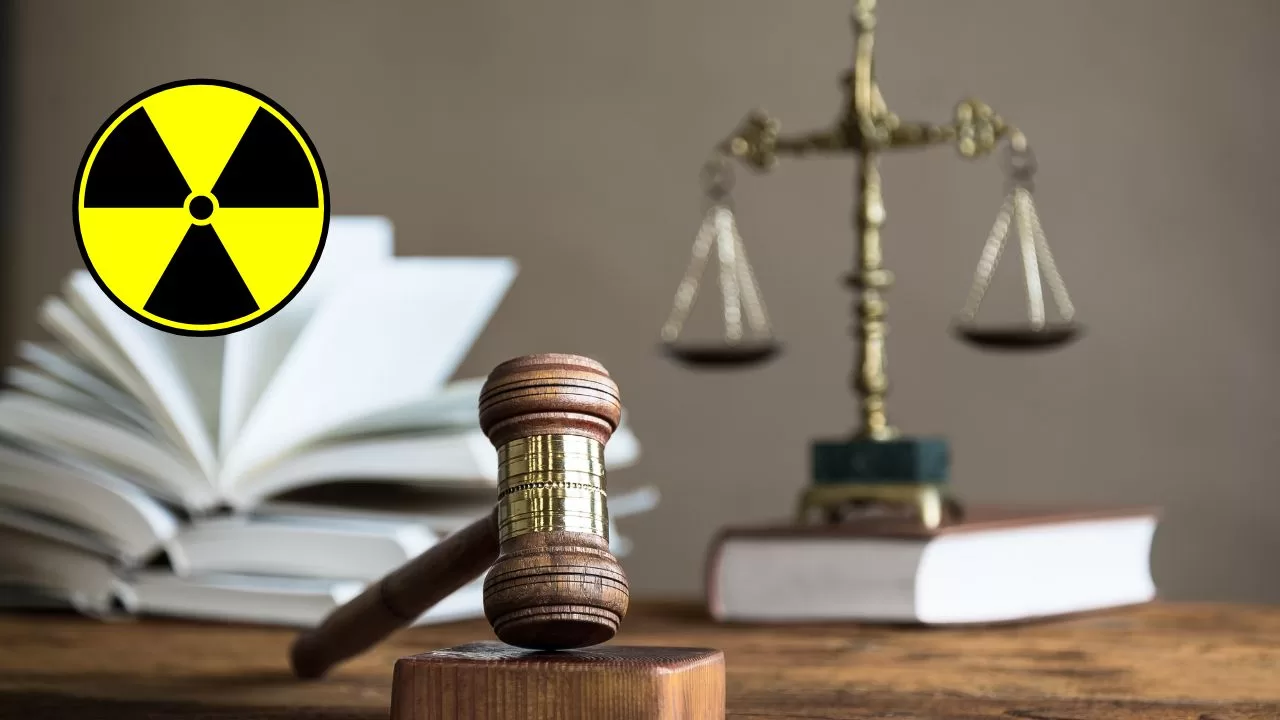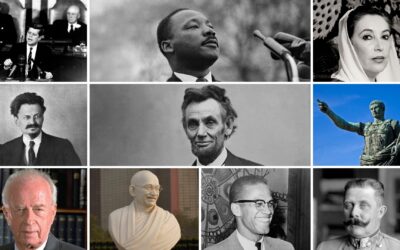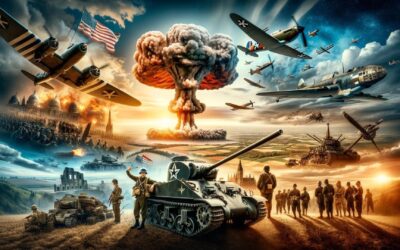In the annals of history, the nuclear age started in a fury of light and sound on July 16, 1945, with the first successful detonation of a nuclear weapon – a test fittingly named “Trinity.” A few weeks later, the world witnessed the devastation nuclear weapons could unleash as Hiroshima and Nagasaki were decimated. The nuclear age had indeed dawned, but it was an era fraught with peril, forcing the world to reassess its approach to warfare and international diplomacy. This led to the emergence of an international legal framework to curtail the spread and use of nuclear weapons, the subject we explore in this article.
The earliest responses to nuclear weapons were rooted in horror and abhorrence. After the bombings of Hiroshima and Nagasaki, an overwhelming sense of the destructive power these weapons possessed spread globally. This response initiated a discourse that would ultimately lead to the establishment of international laws aimed at controlling the proliferation and use of nuclear weapons.
In 1946, the United Nations General Assembly adopted its first resolution – Resolution 1(I) – which established the Atomic Energy Commission. Its purpose was to deal with problems raised by the discovery of atomic energy, including controlling atomic energy to ensure its use only for peaceful purposes and eliminating atomic weapons from national arsenals.
The International Atomic Energy Agency (IAEA) was established in 1957 to promote peaceful uses of nuclear energy and prevent its military use. The IAEA’s safeguards system verifies compliance with the Treaty on the Non-Proliferation of Nuclear Weapons (NPT), which was introduced in 1968 and came into force in 1970. The NPT forms the backbone of the global nuclear non-proliferation regime. It is founded on three pillars: non-proliferation, disarmament, and the right to peacefully use nuclear technology.
The Treaty has been instrumental in curbing the proliferation of nuclear weapons. Yet, it’s important to acknowledge its limitations. Five states, known as nuclear-weapon states (United States, Russia, China, France, and the United Kingdom), are allowed to retain their nuclear arsenal, albeit under the obligation to pursue disarmament. However, disarmament progress has been slow, causing frustrations among non-nuclear-weapon states. Additionally, a few states remain outside the Treaty, including nuclear-armed India, Pakistan, and North Korea, as well as Israel, which maintains a policy of “nuclear opacity.”
Another landmark agreement was the Comprehensive Nuclear-Test-Ban Treaty (CTBT), prohibiting all nuclear explosions. Adopted by the UN General Assembly in 1996, the CTBT has yet to enter into force due to the non-ratification by eight specific states. However, it has created an international norm against nuclear testing, which has largely been observed.
The Treaty on the Prohibition of Nuclear Weapons (TPNW), also known as the Nuclear Ban Treaty, came into effect in 2021. The TPNW prohibits parties from developing, testing, producing, acquiring, possessing, or stockpiling nuclear weapons or other nuclear explosive devices. It also bans any transfer or use of nuclear weapons or nuclear explosive devices and the threat to use such weapons. This is a significant step toward the complete elimination of nuclear weapons.
Despite these frameworks, challenges remain. The existing treaties have not yet achieved complete disarmament, and not all countries are party to these agreements. Nuclear-weapon states have modernized their arsenals, and geopolitical tensions continue to exist.
However, the international legal framework has also evolved to address these challenges. Various conferences and review meetings provide platforms for discussions to strengthen and extend the existing treaties. Negotiations have been proposed for a Fissile Material Cut-off Treaty (FMCT) to prohibit the production of fissile material for nuclear weapons. Initiatives like the Nuclear Security Summit have addressed issues of nuclear terrorism and security.
In conclusion, while the nuclear age has ushered in unprecedented challenges, it has also stimulated the development of an intricate international legal framework to mitigate these threats. The effectiveness of these laws and treaties depends largely on the political will of nations, international cooperation, and a shared commitment to a world free from nuclear threats. While the journey toward complete disarmament is far from over, these legal tools provide a foundation on which to build a more secure future.
Keywords:
- Annals: A record of events year by year.
- Detonation: The action of causing a bomb or explosive device to explode.
- Diplomacy: The profession, activity, or skill of managing international relations, typically by a country’s representatives abroad.
- Proliferation: Rapid increase in the number or amount of something.
- International Atomic Energy Agency (IAEA): An international organization that promotes the peaceful use of nuclear energy and inhibits its use for any military purpose.
- Treaty on the Non-Proliferation of Nuclear Weapons (NPT): An international treaty with the goal of preventing the spread of nuclear weapons and weapons technology, promoting cooperation in the peaceful uses of nuclear energy and achieving nuclear disarmament.
- Nuclear-weapon states: Countries officially recognized as possessing nuclear weapons by the NPT. These include the United States, Russia, China, France, and the United Kingdom.
- Comprehensive Nuclear-Test-Ban Treaty (CTBT): A multilateral treaty that bans all nuclear explosions for both civilian and military purposes, in all environments.
- Treaty on the Prohibition of Nuclear Weapons (TPNW): An international agreement that prohibits the use and threat of use of nuclear weapons.
- Fissile Material Cut-off Treaty (FMCT): A proposed international treaty to prohibit the further production of fissile material for nuclear weapons or other explosive devices.
Key Takeaways:
- The nuclear age has necessitated the development of an international legal framework to control the proliferation and use of nuclear weapons.
- The United Nations, through its Atomic Energy Commission and the International Atomic Energy Agency, has played a pivotal role in this development.
- The Treaty on the Non-Proliferation of Nuclear Weapons forms the backbone of the global nuclear non-proliferation regime.
- The Comprehensive Nuclear-Test-Ban Treaty, despite not yet being in force, has created an international norm against nuclear testing.
- The Treaty on the Prohibition of Nuclear Weapons is a significant step toward the complete elimination of nuclear weapons.
- Despite these legal frameworks, the world has yet to achieve complete disarmament, and geopolitical tensions continue to pose threats.
The Nuclear Age Articles
Unraveling The Atomic Age: The Life and Legacy of J. Robert Oppenheimer
Unveiling the Atom: The Manhattan Project’s Deep Impact on World History
Albert Einstein: The Maverick Mind that Revolutionized Physics
Leo Szilard: The Atomic Pioneer’s Crusade for Peace
The Ethical Odyssey: Exploring Morality in the Course of Scientific Discovery
Los Alamos National Laboratory: Navigating the Past, Present, and Future of Scientific Innovation
The Cold War: Superpowers in the Ballet of Weaponry
Nuclear Proliferation: The Ever-Present Global Challenge
Interplay of Science and Politics: The Unsung Dance of Progress
Enrico Fermi: Mastermind Behind the Nuclear Age
From Atomic To Thermonuclear: A Detailed Examination of Nuclear Weapon Evolution
The Unforgotten Echoes: Hiroshima and Nagasaki’s Tale of Nuclear Devastation and Human Resilience
Living Under the Mushroom Cloud: The Psychological Impact of the Nuclear Age
Nuclear Fallout: Unmasking the Invisible Threat to Health and Environment
The Power and Peril of Nuclear Energy: A Balanced Perspective
Radiation Sickness: Unveiling the Hidden Costs of the Nuclear Age
From Darkness to Light: Lessons from Chernobyl and Fukushima
Deciphering the Nuclear Waste Conundrum: The Path Towards Sustainable Solutions
Guarding the World from Nuclear Threats: International Laws for Nuclear Disarmament
Journey to Peace: Unraveling the Path to Global Nuclear Disarmament
Culture Echoes of the Atomic Age: Artistic Narratives in the Nuclear Era












0 Comments